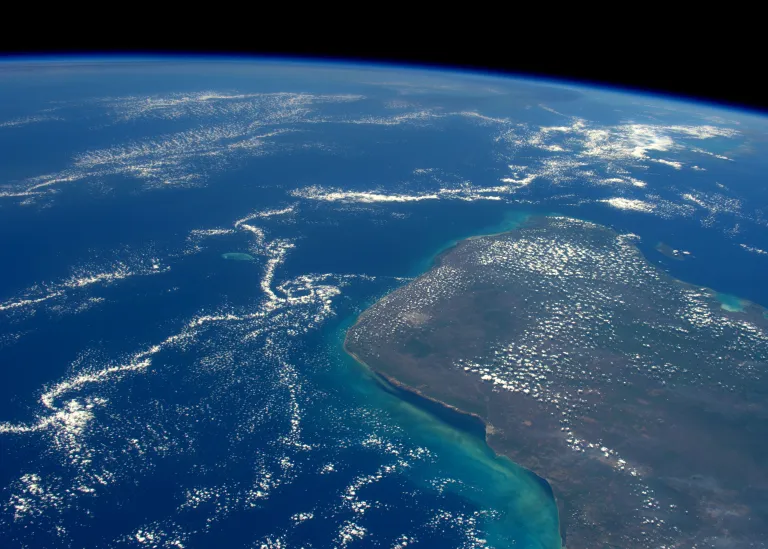A Potential Resolution for the Origins of a ‘Snowball Earth’ Scenario
Scientists believe that Earth may have experienced multiple extreme freeze events in its history, resulting in a phenomenon known as “snowball Earth” where the entire surface was covered in ice. The exact cause of these events remains uncertain, but a recent study published in Science Advances on February 9th suggests that a significant asteroid impact in an already cold climate, such as during an ice age, could be one potential trigger for transforming Earth into a snowball.
To investigate this hypothesis, the researchers utilized computer models to examine an asteroid strike similar to the Chicxulub impact that occurred 66 million years ago on the Yucatán Peninsula. This particular impact is believed to have caused the Cretaceous-Paleogene extinction event, leading to the extinction of numerous animal and plant species.
By simulating the asteroid impact under four different climate conditions, the scientists discovered that in two scenarios where the impact occurred during colder climates, it could have initiated a snowball Earth event.
Interestingly, the simulations revealed that these freeze events did not occur during periods when Earth’s climate was warmer, such as the Cretaceous Period. This suggests that the combination of an asteroid impact and a pre-existing cold climate may have been crucial in triggering these extreme freeze events throughout Earth’s history.
Chicxulub’s Impact

However, if a similar asteroid were to strike the Yucatán Peninsula again, the consequences would be far more severe. The asteroid would have been traveling at an astonishing speed of approximately 12.5 miles per second (20 kilometers per second) before crashing into Mexico’s Yucatán Peninsula.
The impact would have caused rocks to melt and water to vaporize, resulting in the release of several hundred billion tons of carbon dioxide, sulfur dioxide, and water vapor into Earth’s atmosphere. This massive infusion of gases would have blocked sunlight for decades, leading to a significant cooling of the planet and potentially triggering a snowball Earth scenario.
Fortunately, at present, there are no known threats of this magnitude posed by asteroids to our planet. Organizations like NASA continuously monitor the skies for near-Earth objects (NEOs) and work towards developing strategies to protect Earth from potential impacts. NASA’s Center for Near Earth Object Studies utilizes ground-based and space telescopes to track and detect asteroids and comets, while international space agencies collaborate on safeguarding our planet.
For updates on the latest NEOs, comets, and minor planets observed, you can refer to the International Astronomical Union’s Minor Planet Center.
This article is republished from astronomy.com under a Creative Commons license. Read the original article.
Do not forget to share your opinion with us to provide you with the best posts !





0 Comments